Choosing a baby sleeping bag

Each parent wants only the best for their child, which is why manufacturers are trying to produce a wide range of products that are in demand among young mothers and fathers. One of these unusual, but very important items is a baby sleeping bag.
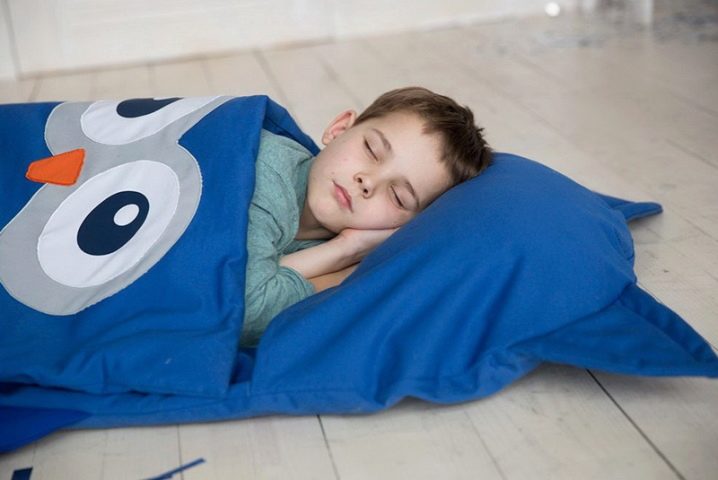
Advantages and disadvantages
Sleeping bags were originally created for tourism, but over time they became common for everyday household use by children under 5 years old, which is why a wide variety of bag models of the most interesting colors and textures have appeared on the market. The surfaces of the product can be decorated with images of fairy-tale characters, floral or abstract prints.
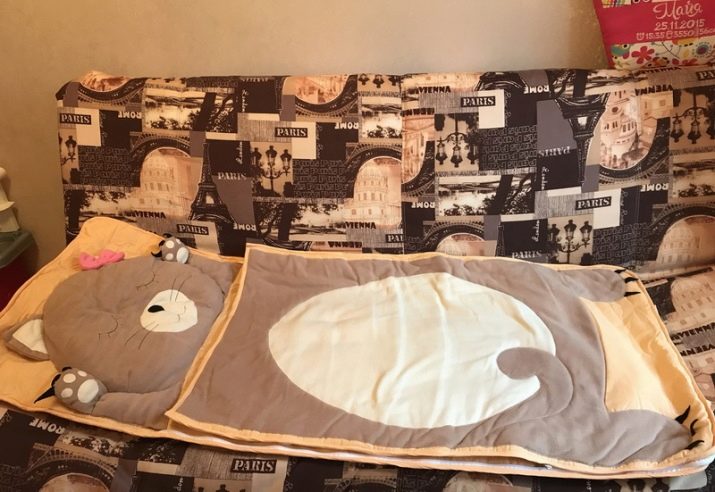
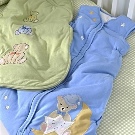
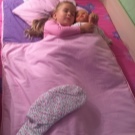
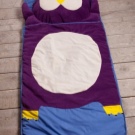
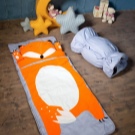
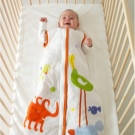
This bag has many advantages. The main thing is that when using it, the child does not open up in a dream. It's no secret that as soon as small children grow out of the diapers, they actively begin to move their arms and legs, so the blanket is often thrown off, and the child is open. This can be uncomfortable and can lead to colds, especially if the house is cool. Moreover, such a problem is characteristic not only of newborn crumbs - children under 3, or even up to 5 years old quite often reveal themselves in a dream.
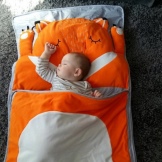
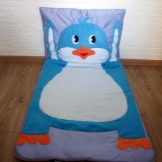
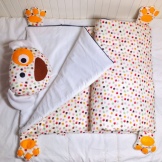
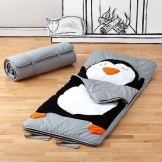
This will not happen in a sleeping bag, and if we are talking about an infant, then during night feedings it will not even need to be removed from the heat, therefore, the baby will not freeze and, having eaten, will fall asleep faster.
The sleeping bag is completely safe. Babies, especially babies, can put a pillow or blanket on their face in a dream, or sink down, entangled in the blanket. In any case, by itself, he can not always get out, and if there is no adult nearby, then the blanket can easily twist and pinch the child's neck, and then trouble will occur. There can be no such danger in a sleeping bag.
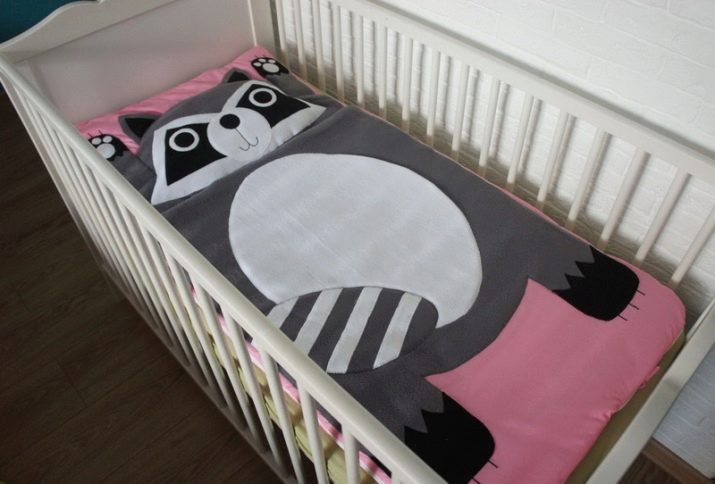

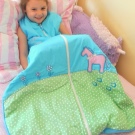
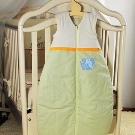
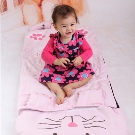
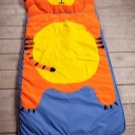
The baby feels very comfortable in the bag. After you put your baby to bed, he has feelings similar to those he experienced while in the womb. This is what contributes to the appearance of a feeling of warmth, comfort and tranquility.
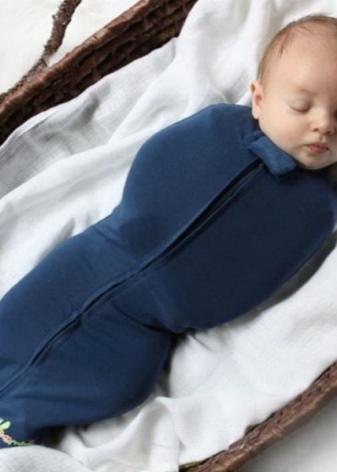
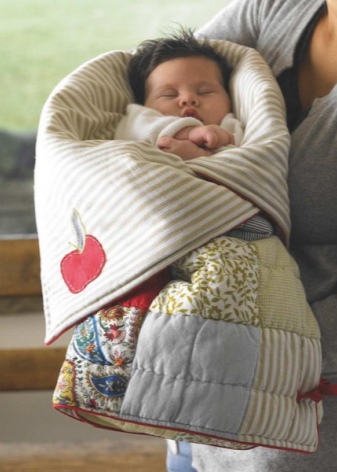
However, there were also some drawbacks. Firstly, not every child will be able to quickly fall asleep in such a shelter, especially from habit. Secondly, many parents do not like it when children sleep in "diapers", but in this case, the child can quickly ruin the sleeping bag. Thirdly, it is rather inconvenient to change a diaper in a sleeping bag. If it is quite simple to do this with an ordinary blanket (you just need to fold it, carry out all the necessary manipulations and cover it again), then you first need to remove the baby from the sleeping bag, and after changing the diaper, put it back. In this case, there is always a risk that the baby will wake up.
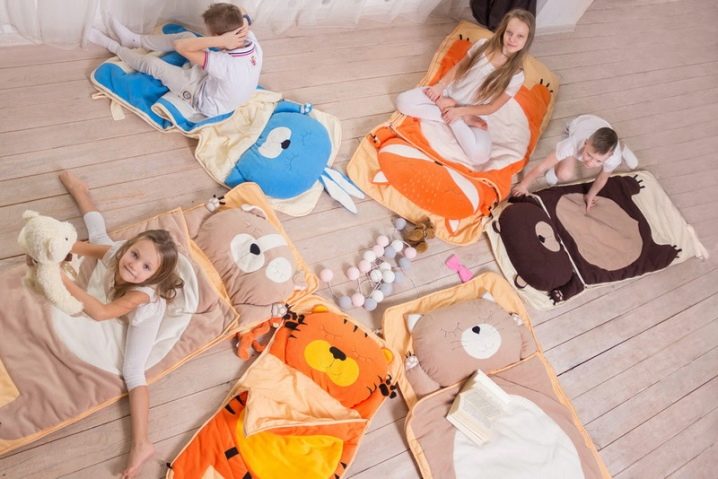
Another disadvantage is associated with a specific model of a sleeping bag without gloves: when using such a product, the baby's hands will always be on the surface, and in the off-season, when the air is usually still cool in the houses, the child can get very cold.
What to look for when buying?
The choice of a sleeping bag should take into account a whole range of factors.
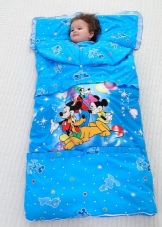
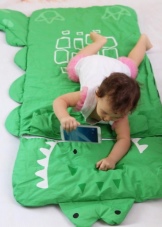
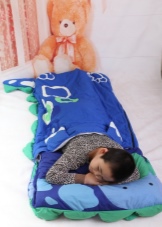

Season
Most often, manufacturers produce sleeping bags of three types: winter, summer, and also for three seasons (autumn / spring and summer). Seasonality should be taken into account, especially if you plan to use the item on your hikes.If you intend to travel in the hot season, when the night temperature does not drop below 6 degrees, there is no point in purchasing a winter sleeping bag: in such a device it will be hot and uncomfortable. But a summer bag, like a three-season bag, will be absolutely useless in winter, when it cannot protect the baby from bad weather and cold air. Obviously, at -15 degrees, a light blanket will not be able to maintain +17 degrees, which are optimal for normal life.
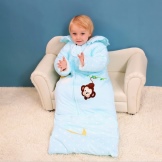
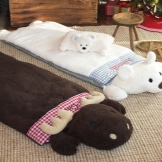
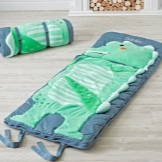
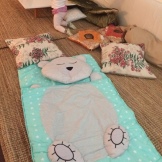
Advice: think in advance whether the child will sleep in a tent or in the open air. The first option is preferable, since in this case the child will not experience heat, being entirely inside the bag, and at the same time will be protected from wind and rain.
Filler
This factor is of tremendous importance when choosing a sleeping bag, since the material with which the bag is filled is responsible not only for the thermal insulation of the crumbs, but also for the weight of the product and its durability. As a rule, I use down or synthetic compounds in sleeping bags. Fluff retains heat well, reliably protecting the child from cold and gusts of wind, and its weight is much lower than that of artificial compositions. However, such a filler very often causes allergic reactions in a child and can be dangerous to his life and health. You can buy such a bag only if you are absolutely sure of the tolerance of the material by the baby's body.
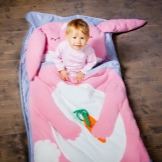

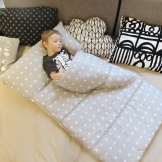

Synthetic fillers are slightly heavier than down, and the degree of thermal insulation is slightly lower. But the advantages are also obvious: if the down sleeping bag gets wet, it will immediately become heavy and no longer perform thermal insulation functions, and it will take a very long time to dry it. Synthetic materials are easy to clean and wash very quickly, and in addition, even when wet, they continue to retain heat. It is also important that the cost of artificial materials is much lower, so such a sleeping bag is available for most young families.
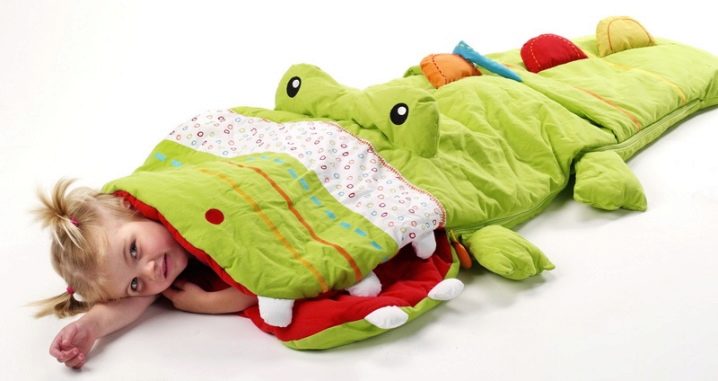
Despite these advantages, it is better for children under 3 years old to buy bags with natural fillers.
The size
There are several types of sleeping bags.
As a rule, the following varieties are presented in stores:
- for newborns;
- for children 1-3 years old;
- for kids 3-5 years old.
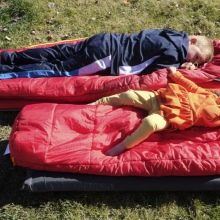
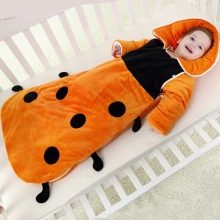
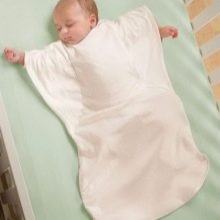
However, not so long ago, transformer models appeared on the market that can be used from birth to the upper age bracket: the product has the ability to change the length as the child grows. In addition, it will be quite nice if the bag has the ability to adjust the size of the hood. It is advisable that the sleeping bag is appropriate for the child's height. You should not buy a model that is too long, since the crumb can simply get entangled in it and damage something to itself. It is optimal if the product is 10–15 cm larger than the baby's height from legs to neck. Only in this case he will be able to move freely, but at the same time not get confused.
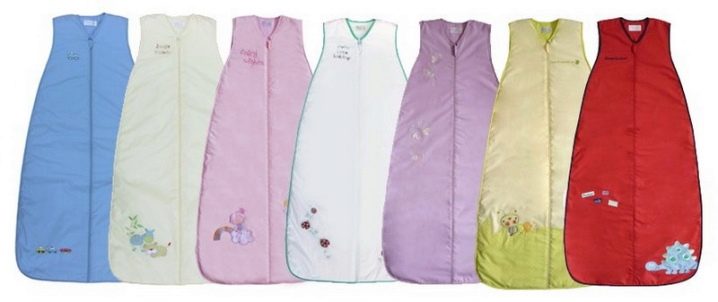
The form
Today manufacturers offer several types of bags.
- Cocoon. These sleeping bags are similar in appearance and functionality to adults, however, they are intended for children 3–8 years old.
- Blanket. Suitable for children from 1 to 3 years old.
- Envelope. It is purchased for the smallest and is used from birth to 1–1.5 years.
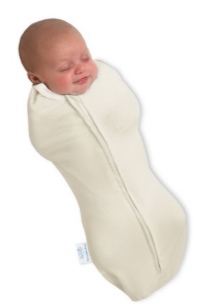
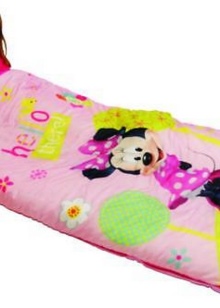

The cocoon differs in that it is already in the feet, and in the shoulders, on the contrary, it is expanded. Thanks to this shape, it is much warmer than all other types of sleeping bags. However, sleeping in them is not very comfortable, so such models are most often used exclusively as options for tourism. However, in stores you can find other options for cocoons, which, on the contrary, are narrowed at the top and widen downward. Such a device allows the child to lie quietly, without hindering movements, so the model can be used as an everyday model for the home.
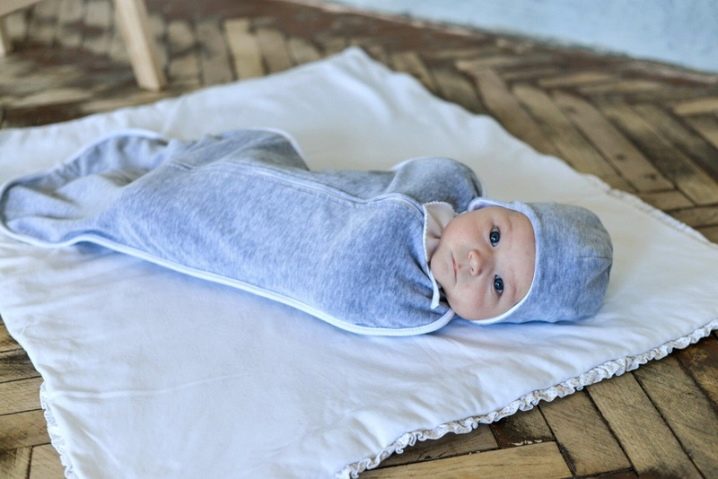
Neck
To avoid accidents, you can purchase only those bags, the neck of which is relatively free, but at the same time not so much that the baby can remove it on his own.It is optimal if there is a distance of 1.5 cm between her and the child's neck.
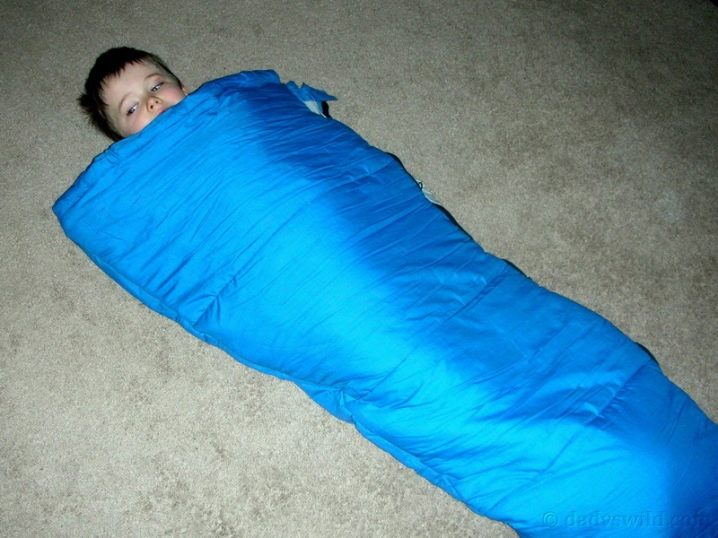
Back
The back of the bag should not have any seams, decorative bows / appliqués / buttons that could cause discomfort to the child during sleep. Nothing should interfere with the restful sleep of the baby.
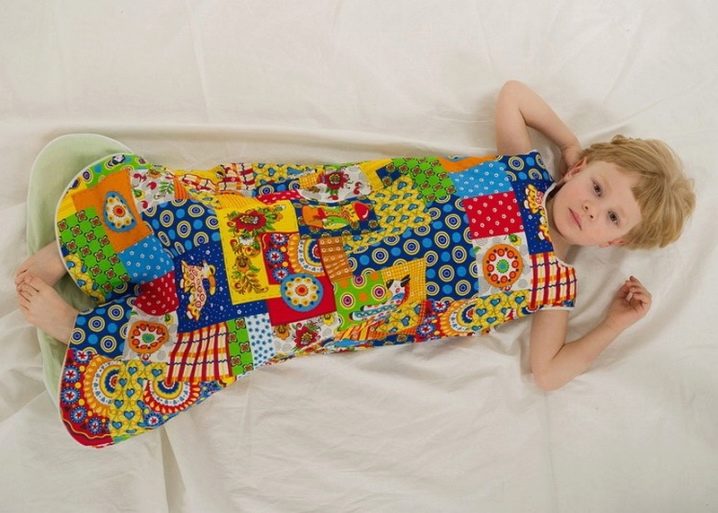
Clasps
The ideal sleeping bag closure is a top-to-bottom zipper and small rivets on the shoulders.
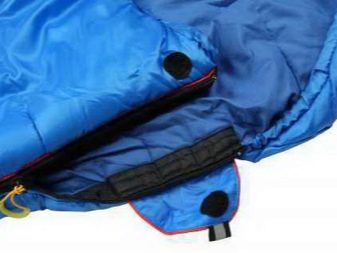
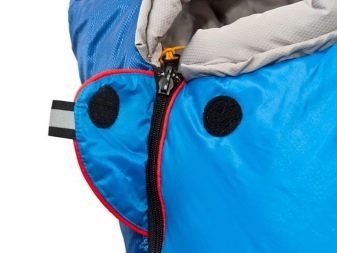
Advice
In addition to all of the above, the following requirements are imposed on sleeping bags:
- the material used for sewing must be without chemical treatment, hypoallergenic and breathable;
- the ability to wash at a temperature of 40 degrees;
- the weight of the object should not be more than 10% of the baby's body weight.
Judging by the reviews, there are more and more sleeping bag lovers every year, and users leave both negative and positive comments, which were described in detail in our article.
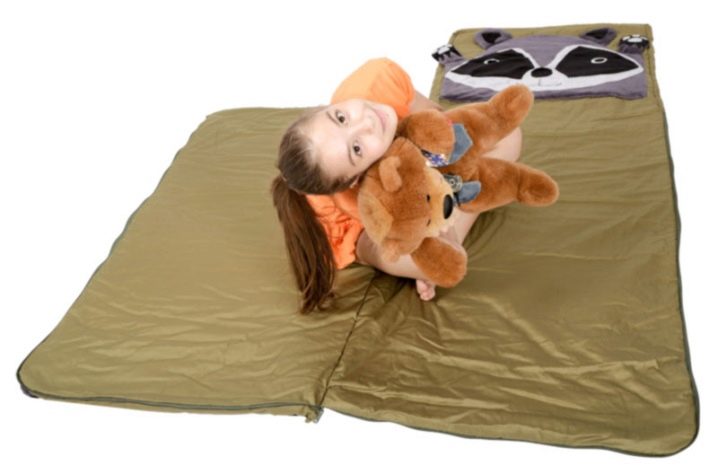
Now you can also decide for yourself whether your child needs this attribute or not. We hope our tips have helped you make the right choice.
For information on how to choose a baby sleeping bag, see the next video.













The comment was sent successfully.